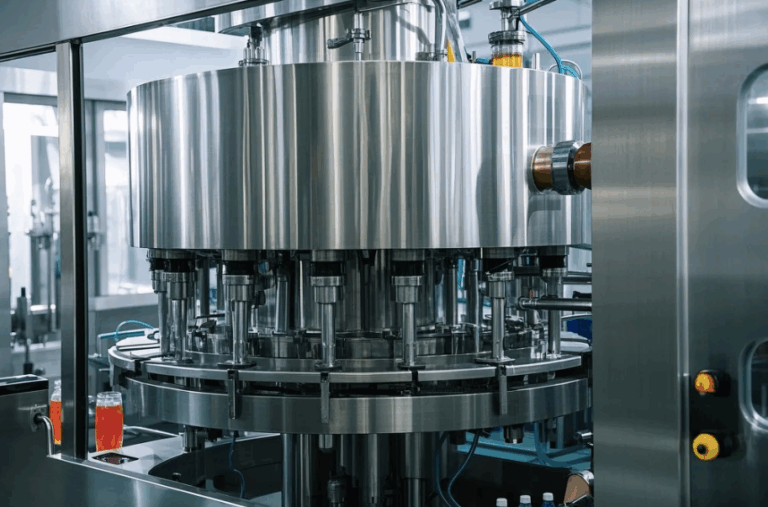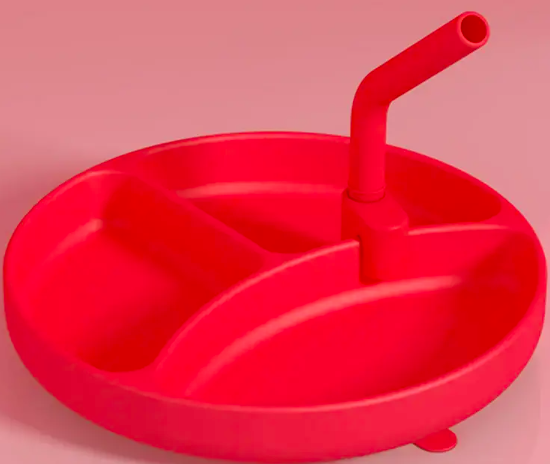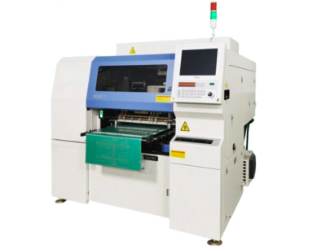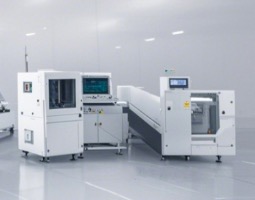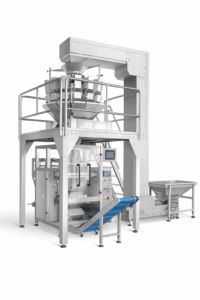Table of Contents
The filling capping machine has become an essential tool for streamlining liquid and semi-liquid packaging processes. It combines the precise filling of containers with secure sealing in one fully automated operation, minimizing human intefrvention while maximizing efficiency and consistency. This article explores how the machine works, where it’s applied, and why it plays a vital role in high-volume, high-precision packaging environments.
1. Working Principle of the Filling Capping Machine
The filling capping machine integrates two core functions—filling and sealing—into one continuous process. Once containers are placed or conveyed into position, the machine begins by dispensing a specified volume of product. It then immediately seals each filled container with a matching cap, using torque control and alignment systems to ensure an airtight seal.
During the filling phase, the machine uses advanced metering systems such as gear pumps or piston pumps, depending on the viscosity of the product. Volume accuracy is maintained within a margin of ±0.5%, which ensures that all units in a batch are uniform. After filling, a mechanical or servo-driven capping system automatically applies the appropriate type of closure, whether it’s a screw-on, snap-on, or specialty cap. The entire process is overseen by PLC (Programmable Logic Controller) software, which allows for fine-tuning of timing, torque, and output speed.
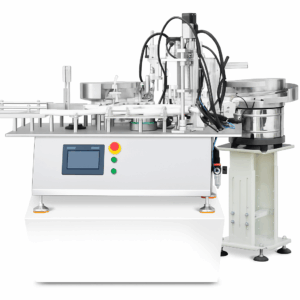
2. Applications of Filling Capping Machines in Industrial Sectors
While filling capping machines are often associated with food or pharmaceutical production, their role in industrial and commercial fields is equally important. Many manufacturers that deal with chemical, automotive, and household products rely on these machines to maintain operational continuity.
For example, in the chemical industry, companies use these machines to fill aggressive substances such as solvents or detergents. Machines designed for this purpose are typically made of corrosion-resistant materials like 316L stainless steel and PTFE to ensure durability and safety.
In the automotive sector, filling systems are essential for packaging lubricants, engine oils, and transmission fluids. These materials often vary in viscosity, requiring the machine to adapt dynamically to avoid overfilling or splashing. Modern machines feature temperature compensation functions and anti-drip nozzles to handle such challenges.
For household cleaning products, manufacturers appreciate the speed and flexibility of filling capping machines. These machines support high-volume packaging runs, easily handling up to 10,000 bottles per hour depending on configuration. This throughput is crucial for meeting market demand while maintaining consistent packaging quality.
3.Advantages of Using a Filling Capping Machine
There are several key benefits to integrating a filling capping machine into a production line:
- Efficiency: Automation of filling and sealing saves significant labor costs and shortens cycle times.
- Precision: Modern machines offer exceptional volume control and torque settings, which reduce waste and ensure consistency.
- Flexibility: Equipment can often be adjusted for different container shapes, sizes, and cap types without extensive downtime.
- Safety and Cleanliness: Systems can be enclosed to prevent leaks, fumes, or contact with hazardous materials, meeting international safety standards.
- Reduced Downtime: Many machines feature quick-change components and automatic cleaning systems to minimize maintenance interruptions.
Some production lines have reported a 30–40% increase in packaging speed after switching from semi-automated to fully automated filling capping systems. In industries where time and precision are critical, this improvement can directly impact profitability.
4. How to Select the Right Filling Capping Machine
When choosing the right filling capping machine, manufacturers should consider several factors to match their operational needs. These include:
- Type of product: Viscosity, reactivity, and density will affect the type of pump and material compatibility.
- Packaging format: The shape and size of the container influence the speed and adjustability of the machine.
- Production volume: Higher-output models are better suited to large-scale operations, while compact machines may be ideal for smaller batch production.
- Integration: Machines should be compatible with existing conveyor systems, labeling equipment, and quality control stations.
- Regulatory compliance: Machines must meet standards like CE, UL, or ATEX depending on regional or safety requirements.
A well-selected machine not only ensures optimal performance but also offers scalability as the business grows.
5. Conclusion
The filling capping machine is more than just a piece of equipment—it is a critical part of any packaging system that values precision, consistency, and efficiency. Whether applied in chemical plants, lubricant factories, or cleaning product manufacturing, its ability to automate core functions gives companies a competitive edge in today’s fast-paced market.
By understanding its mechanisms, applications, and selection criteria, businesses can make informed decisions that lead to long-term success. As global demand for automated packaging continues to rise, the filling capping machine remains a vital asset in industrial production strategies.
0




